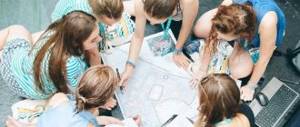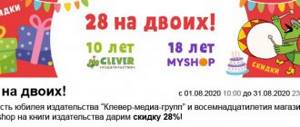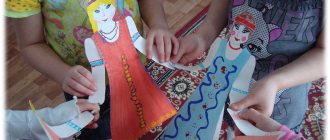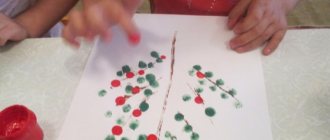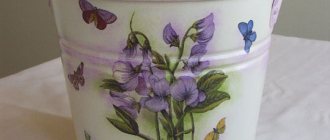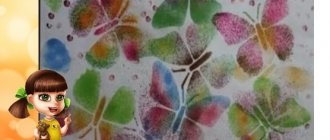Various limitations of disabled people related to their physiological, psychological and intellectual capabilities not only complicate their lives, but also hinder their integration into society. Most of these citizens often manage to create relatively comfortable living conditions for themselves, but at the same time their cultural or creative sides remain unsatisfied.
This negatively affects the general condition of people with disabilities, whereas with sufficient inclusion in the world, for example, art and other entertaining areas, it would significantly change their lives for the better. Therefore, many organizations dealing with the problems of such citizens regularly hold competitions for people with disabilities in various creative fields.
Creativity of people with disabilities as a stage of integration
From its very foundation, the All-Russian Organization of Disabled Persons (VOI) has developed its activities by protecting the rights and defending the interests of people with disabilities. She took an active part in the formation of all the necessary bills related to improving various aspects of the lives of such citizens, allowing them to quickly and easily adapt to their condition.
Reference! VOI was created on August 17, 1988 and today includes approximately 1.6 million people, 24.3 thousand primary organizations, 2,100 city and district and 82 regional.
But satisfying exclusively physiological needs does not allow a disabled person to feel the full breadth of his (albeit limited in some ways) abilities. Almost all people can achieve the feeling of full involvement in social life only when they realize their creative potential.
This side of VOI’s activities takes up almost half of the time and resources of the organization and its employees, thanks to which, according to many disabled people, “their lives become happier and richer.” As part of the functioning of the organization, both all-Russian and regional creative events are regularly held, such as festivals, competitions for adults and children with disabilities.
The main objectives of these projects are not only to ensure maximum integration of people with disabilities into the life of society, but to identify their potential capabilities. The results obtained during competitions held on an ongoing basis are confirmed by real achievements that not only healthy people are capable of being talented and purposeful, but also disabled people are no exception to this.
Educational and creative project for schoolchildren with disabilities on the topic: Spring
An educational and creative project for children with disabilities of senior school age “In an embrace with falling leaves.”
An educational and creative project for children 14-17 years old with disabilities. This material will be useful for educators and other teachers of boarding educational institutions for conducting excursions, autumn-themed classes, natural history lessons, and drawing. Author: Lopatina Elena Yuryevna, teacher of the State Educational Institution of Regional Educational Institution of the VIII type boarding school in the village of Orlovsky, Rostov region Type : cognitive and creative. Age of participants : 14-17 years (senior group of boarding school). Duration : short-term (September-October) Relevance. At all times and eras, nature has had a huge influence on man and on the development of his creative abilities. The great critic Belinsky V.G. considered nature to be an “eternal example of art.” The beauty in nature is limitless and inexhaustible; better than anything else, it enriches the child’s psyche and improves his aesthetic taste. Target. Fostering an emotional attitude towards nature as an inexhaustible source of beauty and creative inspiration. Tasks. -Develop observation and curiosity in children in the process of becoming familiar with autumn changes in nature. -To awaken in students sensitivity to their surroundings through contemplation of the bright colors of autumn nature and admiration for it. -Cultivate love and interest in nature. Expected result: Pupils will gain experience of a value-based attitude towards nature as a source of beauty, harmony, enrichment of the spiritual world and aesthetic development of the child’s personality. Summing up - collecting and decorating the herbarium, creating a photo album. Activities within the project: -Excursions “Nature in Autumn”, “Beauty of an Autumn Flowerbed”. -Game activities “The world of nature”, “So summer has passed”, “Rules of conduct in nature”. — Thematic observation walks “Migratory Birds”, “Colors of Falling Leaves”. -Creative activities - drawings on the theme “Signs of Autumn”, making crafts from natural materials for participation in competitions and exhibitions. -Visiting the theatrical performance “Golden Autumn” at the House of Culture. -Collecting autumn leaves, drying them and preparing a herbarium. -Joint design of the project photo album. Photo album of the project.
We will tell you a wonderful fairy tale, How autumn descends on the earth, And its multi-colored colors spread magic everywhere.
Here in the flower beds, flowers and trees - Its light, gliding shade, This is such a miracle, believe me, How can you not notice it? We tried to see in everything the beauty of nature’s withering, and we also managed to hear the shimmer of autumn melodies...
In September, it was just the beginning of Silence and peace in nature And only the sad song sounded of birds flying away from the sky... And October, with a crimson brush, touched the grass and trees. And we hardly recognize the clearing, Only the gray sky remains...
But in the soul it is so easy to be a poet, So we decided and guessed - To preserve the colors of summer, We took and collected leaves!
They were dried, stored with love, and now we will show you the herbarium - He will tell you wonderfully and vividly about autumn walks!
Autumn is wonderful, generous, different, We painted it like this -
And all the wonderful moments were left in these photos for you!
And, of course, we “created” autumn, You will appreciate our skill - How we were able to depict it, But don’t judge strictly!
Let each season have its own charm and a little mystery, But it was not by chance that we appreciated the richness of autumn nature!
We recommend watching:
Outline of an English lesson in 6th grade Social project at school Project activity in 4th grade Project for schoolchildren on home economics
Similar articles:
Project activities in English lessons
Project activities at school
Project: Our future, grades 7-9
Workshop for school teachers. Project activities
Workshop for school teachers. Educational research
Russia as part of Abilympics
Organizations for people with disabilities around the world are trying to maximally improve the quality of life of citizens with physical, intellectual and mental disabilities. This goal leads them to unite, because thanks to joint actions and the exchange of accumulated experience, it allows them to perform their assigned functions many times faster and more efficiently.
Russia joined the Abilympics movement in 2014
One of such organizations is “Abilimpix” - the International Non-Profit Movement. The main task of this organization is to create a system of competitions aimed at professional excellence among people with disabilities. This approach provides high-quality and effective career guidance and motivation for people with disabilities to obtain vocational education, and subsequently employment and integration into social life.
Sports for the disabled
Russia joined the ranks of the Abilympics movement in 2014, which gave it the opportunity to position itself as a social state in the international arena that fully supports the principles of the UN Convention on the Rights of People with Disabilities.
The Abilympics movement is rightfully considered the only competition system that encourages the development of professional skills among part of the population with disabilities.
It originated in Japan and has been successfully developing around the world since 1972. Currently, 47 countries are participating in the movement. Every year, more and more constituent entities of the Russian Federation join this organization, which allows the country as a whole to improve the quality of socialization of people with disabilities.
Participants in the movement are adults with health problems, disabled children of school age, as well as university and college students. One of the brightest events for the Russian national team was receiving 10th place in 2020 at the international championship organized by Abilympics, held in Bordeaux in France.
This movement is constantly developing in Russia, and competitions are already open in 84 regions of the country for involvement in the system. In addition, 85 volunteer centers began their activities, whose task is to support and meet the needs of the championships, as well as help in changing attitudes towards people with disabilities in society.
"Colorful ideas." New techniques and materials for creativity with children with disabilities and more
Olga Shekhter (Molyashcheva)
"Colorful ideas." New techniques and materials for creativity with children with disabilities and more
Recently, new modern materials and equipment for drawing and modeling have appeared, which make the process of visual creativity more interesting, more productive and developing.
But my task, as an arts teacher, is to select from this variety such techniques and materials that will have a psychotherapeutic and corrective effect, that is, to create special conditions for children with disabilities to correct certain disorders.
You don’t have to buy material for creativity in a store; you can make it yourself. After reading the ideas for making it, you will understand that this is not only useful, but a very exciting, interesting and exciting process.
For example, a child with autism is a child who is closed to the whole world. And the art studio should become a special environment for him, an environment of emotional and sensual influence on the world of this child, where he will feel protected and free in his self-expression.
I am planning classes with aqua plasticine. This plastic material appeared not so long ago and I use it in my practice. I see the positive impact of this technique on special children. This plasticine has a wonderful property - it is very light, which allows crafts to float on the surface of the water. Plasticine easily takes the desired shape, is soft, and does not stick to your hands. The colors are bright and rich.
Modeling themes: waterfowl, water circus, water park, underwater world. After creative work, we gather with the guys on the carpet and let our “creatures” set sail. There is no limit to joy. Even mothers and fathers, and teachers after such classes rush to the store to buy a box of such plasticine. And I’m happy - my students create at home too.
“Drawing in a package” is an unusual way of drawing, and unusual and new things are always interesting. And you need very little for this: a transparent bag, paints, tape, glitter and vegetable oil. The child will get great pleasure from pressing with his fingers and trying to mix the paints, but oil prevents this. The colors seem to run away from each other...
Recipe: put a teaspoon of paint (gouache) in a zip bag. It is better not to mix more than two colors, otherwise you will end up with a black and gray mass. Add some sunflower oil. Close the lock on the bag. Tape the bag onto a windowpane, door, or table. Glitter makes drawing more interesting. Observing this phenomenon fascinates, relaxes, and calms the child.
“Sensory bottles”, which are very easy to create yourself, have the same effect. The main thing is to choose the ideal lightweight filler. There are many options for creating such a bottle on the Internet.
Materials:
• empty transparent bottle with a sealed cap,
• glycerin (1-3 teaspoons);
• boiled water;
• hair or shower gel;
• food coloring; sparkles.
Combine all the “ingredients” and seal the lid. The more glycerin, the more viscous the liquid.
Filling ideas: elastic bands of any color, feathers, pompoms, confetti, colored ribbons, gel balls, sequins, tinsel.
The aroma of coffee, cocoa, and chocolate always attracts people, especially children. the recipe for “chocolate plasticine” on the Internet. Children's hands are drawn to such material and there is no need for unnecessary instructions. It is important to offer additionally: rolling pins, molds, beads, sequins, etc. Together with the guys, we created fragrant culinary masterpieces, eagerly waiting for them to dry so that we could use them in story games in the group.
Recipe: 2 cups flour, 1 cup fine salt, 1 cup hot water, 1 table. the spoon grows. butter, 1 table. spoon of citric acid, cocoa powder by eye. Mix all dry products. In a saucepan, bring water to a boil with a spoonful of oil, pour into the mixture.
Mix the mixture, add more cocoa if you need to make the plasticine more chocolate in color. Knead until you get an elastic dough that does not stick to your hands.
Children come to my art studio who paint only in black, and I understand that I have a special task - to make the world of such a child colorful. To awaken feelings and experiences, I use unconventional techniques. You are all familiar with collective collages, and “wax” and “finger” painting, and “blotography,” and monotype, and the techniques of drawing art therapy. Children especially liked drawing with “volumetric paints”, which allow them to create funny plump drawings. For this kind of painting you need a dense base, because the paint hardens after drying...
Recipe:
2 table. spoons of flour, 2 table. tablespoons fine salt, 3 teaspoons baking powder. Add water, stir. Coloring - gouache or food coloring. It is convenient to apply paint onto thick paper, cardboard with a thick brush, cotton swabs, or squeeze it out of a bottle with a thin spout. To add volume, bake in the microwave (10-20 seconds)
(photo below).
Not long ago, rice appeared in my teaching arsenal, not just plain rice, but multi-colored rice. You can see how I use it in the photographs. Ideal filler for a sensory box.
Recipe: pour a glass of rice into a tight bag, add a pinch of dry food coloring; shake the package; after that, add 1 teaspoon of alcohol (option - with vinegar and acid). Dry until the smell disappears. I started painting pasta shells and stars and even letters this way. Children decorate their sculptures and squeal with delight because everything is bright and miniature.
And if I offer low white trays, they try to draw with rice, holding their palm as if drawing with sand. The impressions and sensations from this process are indescribable not only for the children, but also for the teachers.
Lively creative work with children is created here and now, not later, not after, not at a future exhibition, but right here! Right now! In a moment! That's why I attach importance to the special atmosphere. In my case, the important effect is not learning, but emotional immersion in creative activity - all this is special methods of teaching with children with disabilities.
IMG]/upload/blogs/detsad-64120-1504067460.jpg[/IMG]
The main directions of the creative life of disabled people
People with disabilities, just like ordinary citizens, can easily master any cultural skills, the only thing is that they may have certain difficulties in realizing their creative potential. But certain organizations are created with the goal of breaking down these barriers and allowing people with disabilities to enjoy their skills and even compete for prizes.
They organize free competitions for children and adults suffering from any health problems that cause disability. Thus, according to the chronicles of the last few years, the most striking events were the following events.
Competition "No Barriers"
In 2017-2019, VOI and the Union of Artists held the VII All-Russian photo competition “Without Barriers,” dedicated to the lives of people with disabilities. The event was dedicated to the 30th anniversary of VOI. The thematic direction of the competition was “Believe in yourself,” which meant the search for inner strength, energy and desire to achieve your dreams, that in addition to help from various services and organizations for people with disabilities, you should, first of all, find your own supports, which will become the foundation for further growth .
Competition for the blind
In Izhevsk, on November 14, 2020, an open competition in writing and reading in Braille was held for visually disabled children, which made it possible to determine the best reader. The event was dedicated to the International Day of the Blind, which is celebrated on November 13, and was held to attract people to the study of the Braille system. The competition was attended by students from some schools and a kindergarten school, as well as the entire population of Izhevsk, who speak the Braille system.
International Philanthropist Award
In 2020, two anniversaries were celebrated at once: the 30th anniversary of VOI and the 10th presentation of the international Philanthropist Award, a charitable project whose general partner is the Chamber of Commerce and Industry (CCI) of Russia. The project is carried out under the auspices of VOI, the largest member of the Chamber of Commerce and Industry.
The history of organizing the event dates back to 1996, when the first prize for people with disabilities was announced at the Youth Chamber forum. Three years later, in the Rossiya concert hall, as part of the charity concert “Be Kind!” her presentation took place. And on May 27, 2000, the first award ceremony took place on the stage of the New Opera Theater.
This is only a small part of the public events held for people with disabilities with the aim of their successful adaptation to society and acquiring a professional direction. Thanks to them, people who have been treated so unfairly by fate have enough opportunities to improve their lives and find a circle of friends based on their interests, which is one of the most important stages of their socialization.
